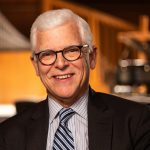
Josephus, the ancient historian who chronicled first century Jewish history in The Jewish War, says that 12,000 Jews died when the Roman general Pompey captured Jerusalem in 63 BC. Another Jewish text from the period described the brutal violence of these events this way:
“The lawless one laid waste our land, so that no one inhabited it; They massacred young and old and children at the same time… As the enemy was a stranger and his heart alien to our God, he acted arrogantly.”
They were violent times
The Jewish ruler Archelaus killed 3000 Jews in 4 BC, massacres occurred under Pontius Pilate (Luke 13:1), and 20,000 Jews were slaughtered at Caesarea during the rebellion against that Roman rule. We know the dreadful violence of Herod the Great who had young male children in Bethlehem killed (Luke 2:16-18). He was a vicious man who even murdered three of his own sons.
Richard Horsley wrote about the days of Roman occupation Israel in Jesus and the Spiral of Violence. He recounts that during the first century BC Roman invasion, the Roman governor of Syria enslaved 30,000 people in the town of Tarichaeae along the Sea of Galilee. Under Roman rule “The victims of the violence of the imperial situation were suffering from poverty, hunger, and despair (Luke 6:20-22). Many peasants, having been forced off their land, had become day laborers hoping for work (Matthew 20)” (p. 29). Hunger and hopelessness were common and the burden of taxation was crushing. Violence was baked into the systems of colonial rule.
Uprisings against the violence of Roman rule were not uncommon (Acts 5:34-37; 21:38), culminating the rebellion of AD 66-70 when the Temple was destroyed by the Roman general Titus. A second Jewish revolt against the Romans occurred in AD 132-135. The Romans crushed the rebellion and the leader, Bar Kokhba, was slain in Caesarea. Many had regarded Bar Kokhba, the “Son of the Star,” as a messianic figure.

The Jewish expectation was that the coming Messiah of the line of David was going to overthrow the Roman powers, gather God’s people who had been scattered across the Empire, cleanse the nation, renew the Temple, and bring the gentile nations under his power. As one Jewish text said:
“See, Lord, and raise up for them their king, the son of David to rule over your servant Israel…. Undergird him with the strength to destroy the unrighteous rulers, to purge Jerusalem from the gentiles who trample her to destruction.”
Jesus stepped into those violent times and broke the spiral of violence
Instead of fulfilling the expectation of a violent overthrow of Roman power, Jesus challenged the powers by bringing reconciliation and peace. In the Sermon on the Mount he proclaimed, “Blessed are the peacemakers, for they will be called children of God” (Matthew 5:10). He did not align himself with the Zealots who sought a violent overthrow of the Romans and disarmed Peter when the apostle opted for violent resistance (Matthew 26:47-56). Jesus extended his hand to those who were victims of violent systems by reaching out to the poor, the captives, and the oppressed (Luke 4:18-19), and by feeding the hungry (Mark 6:34-44). He turned Zacchaeus, a tax farmer for the Romans, into a disciple (Luke 19:1-10). He refused retaliation and called his disciples to love their enemies (Matthew 5:43-48).
In the end, the Romans viewed Jesus as a threat and leveled their repressive violence against him. They crucified him; on the third day God raised him from the dead in a divine rebuke of violence. As the resurrected Lord, Jesus had mercy on a man who “was formerly a blasphemer, a persecutor, and a man of violence” and made him into an apostle (1 Timothy 1:12-14). Paul turned and proclaimed the gospel of peace (Ephesians 6:15).
Violence has marked our nation’s history
We have witnessed violence against Africans brought to these shores in the slave trade and who have faced social and physical violence after emancipation. The colonization of North America unleashed violence upon the First Peoples who were killed and forced off their traditional lands. Many women testify about the sexual, emotional, and economic violence they have faced. Immigrant communities tell story after story about being pushed to the side and abused simply for wanting to live and work here in freedom.
Yet the gospel has been used as an instrument in the cause of violence. In his book The Civil War as a Theological Crisis, the American historian Mark Noll recounts how many appealed to the Bible to justify the violence of the slave trade. Mark Charles and Soong-Chan Rah, authors of Unsettling Truths, recall how Indigenous peoples suffered violence due to theology gone wrong when the Joshua story about the conquest of Canaan was used against them. A former missionary colleague told me about preaching in a church where, after service, he greeted a woman who had been battered. When he asked her what had happened, her husband responded, “I hit her so she’d learn to submit.” In the recent assault on the nation’s Capitol, we saw Jesus banners flying. This is not Christ’s gospel of peace.
The church stands – must stand – with Jesus against the spiral of violence
Jesus’s life and teaching call today’s church to turn away from violence in all its forms, to stand with those who suffer any kind of violence, to resist all the violence baked into our society, and to turn the violent into peacemakers. Our footwear is the gospel of peace and our church is the cradle of reconciliation. Jesus’s command to “Love the Lord your God” and “Love your neighbor as yourself” is a call to our community to commit to active non-violence (Mark 12:28-31).
Dr. Gene L. Green is the Dean of Trinity International University – Florida. Visit them at tiu.edu/florida
Read more on Dr. Green at Dr. Dr. Gene L. Green Named Dean

Comments